In pictures: Norfolk tidal surge aerial views
- Published
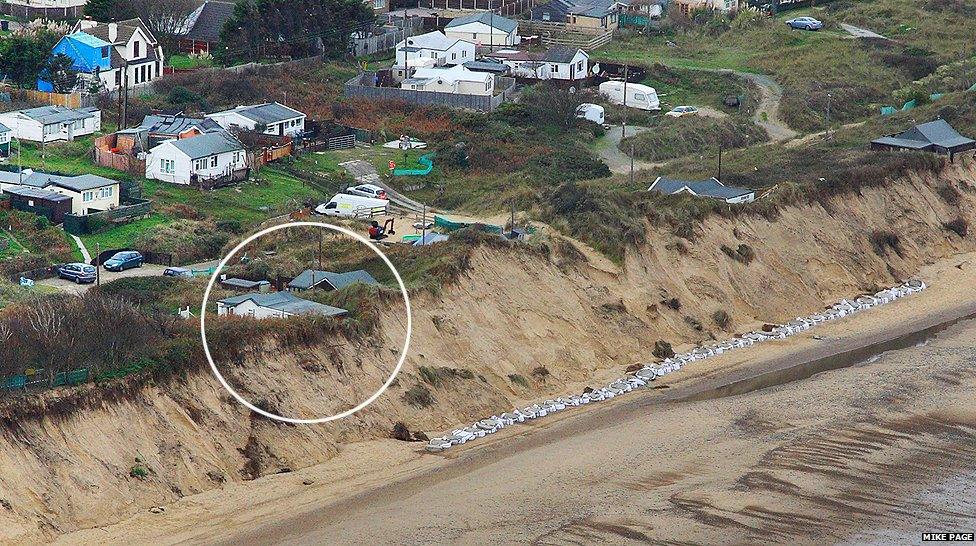
A major clean up operation continues around the Norfolk coast after the biggest tidal surge in 60 years caused destruction and flooding on Thursday night. At Hemsby, properties on the cliff edge took the brunt of the storm.
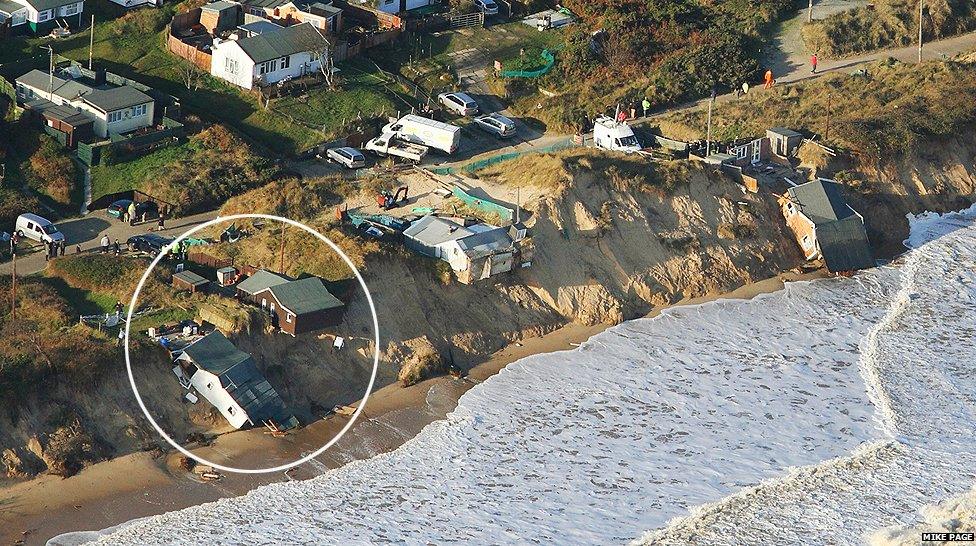
Villagers formed a "human chain" to try and rescue possessions from the properties before they were claimed by the sea. At least one property was carried away by the tide.
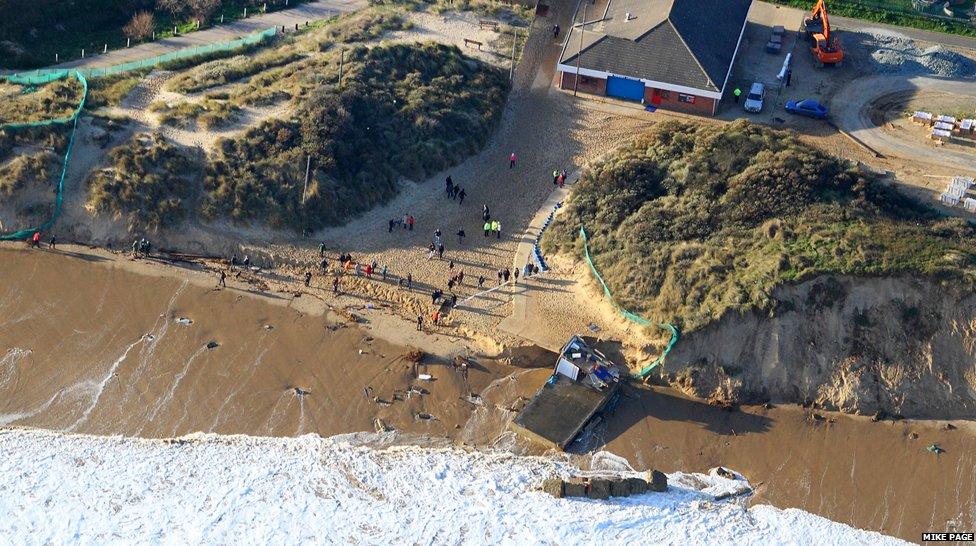
The tidal flood washed the lifeboat station at Hemsby into the sea. Coxswain Steve Hewett said: "It's a complete mess. We've had several buildings and bits of concrete blocks being broken up and pushed down the coast. And they're now scattered all over the beach."
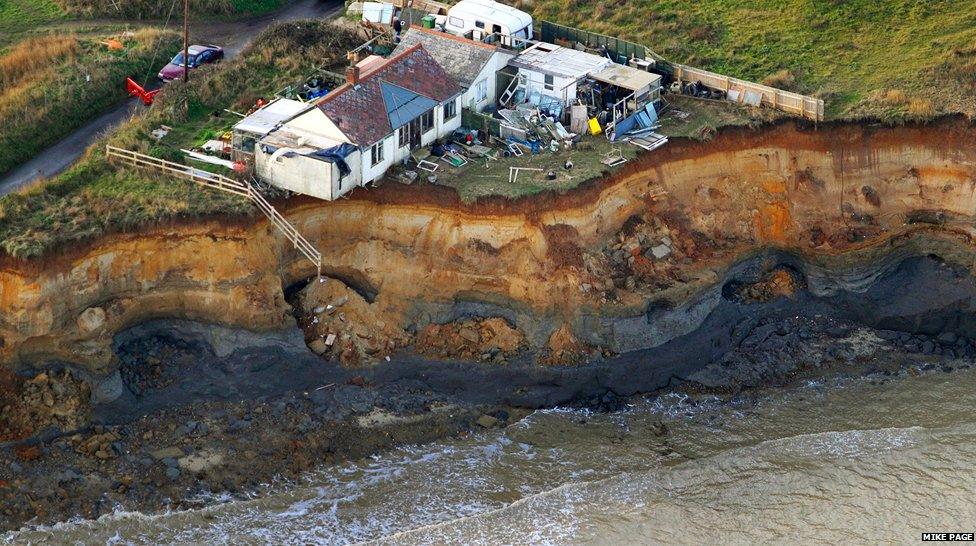
The tidal surge also claimed metres of cliff-face at Happisburgh. Owner Bryony Neirop-Reading, the last resident on the cliff-top, thought she'd have at least another three years in her home with the "million dollar view". It will now be demolished by the weekend.

The pier at Cromer was also heavily damaged as the sea crashed back off the sea wall and up against the floorboards of the pier. A spokesman for North Norfolk District Council said the damage was likely to take "until the spring" to fully repair.
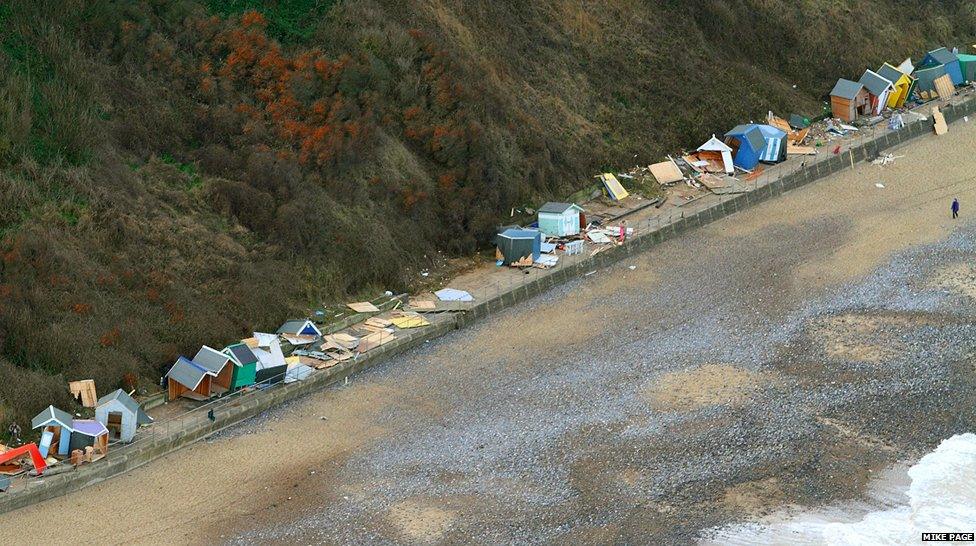
Beach huts along the Norfolk coast at Cromer were also destroyed by the high tide. Aerial photographer Mike Page has been taking images of the Norfolk coast since the 1960s. He said the power of the sea was "quite unbelievable."
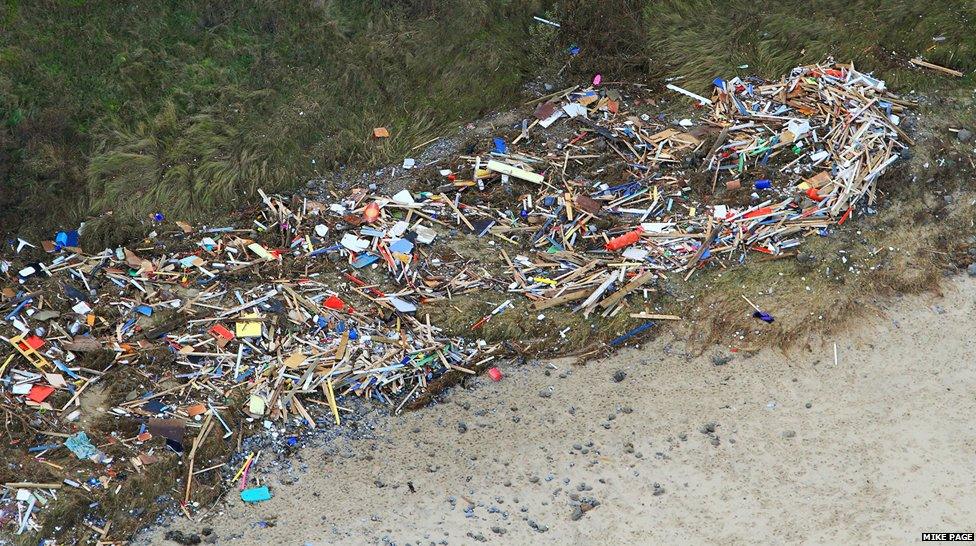
South of Cromer pier, towards Overstrand, the beach huts were reduced to "matchsticks" as the cliffs took "a real hammering", said Mike Page. Speaking on a visit to Wells-next-the-Sea on Monday, Prime Minister David Cameron said: "These were terrible floods... the resilience of people here in Norfolk must be praised."

Wildlife also suffered in the tidal surge with about a hundred seal pups orphaned and needing care at the East Winch wildlife hospital in west Norfolk. A number of fresh water marshes were contaminated with sea water and the RSPB reserve at Snettisham suffered significant damage.
- Published10 December 2013
- Published10 December 2013
- Published9 December 2013
- Published7 December 2013
- Published7 December 2013
- Published6 December 2013
- Published6 December 2013
- Published31 March 2013